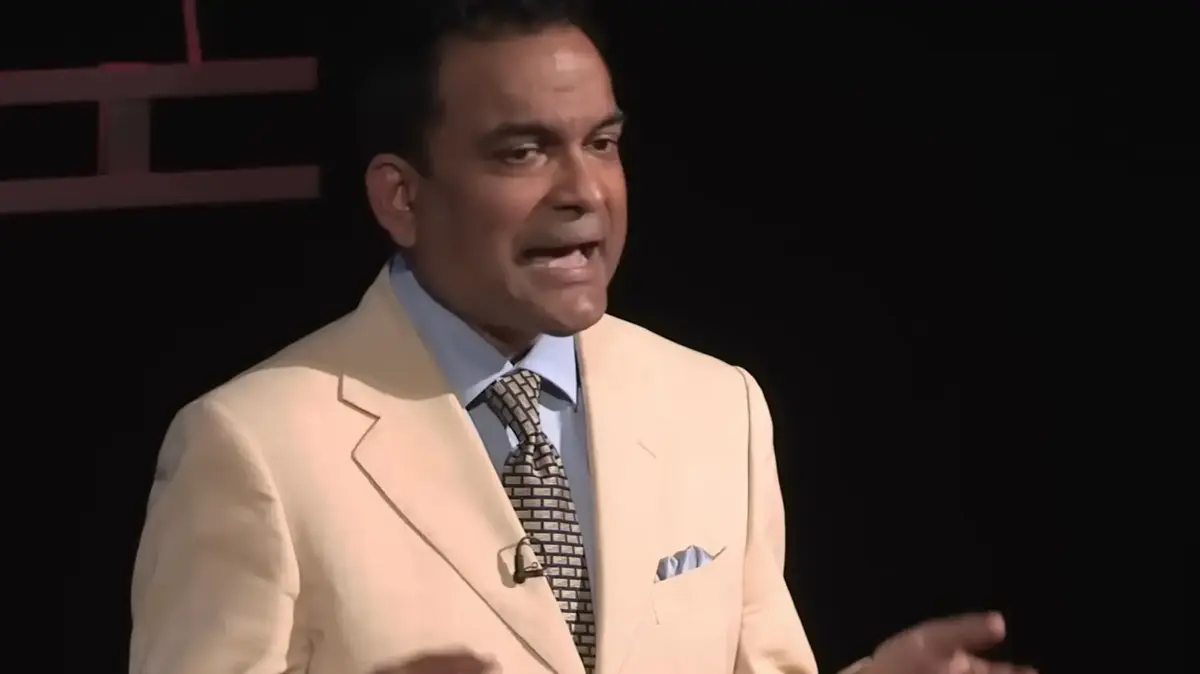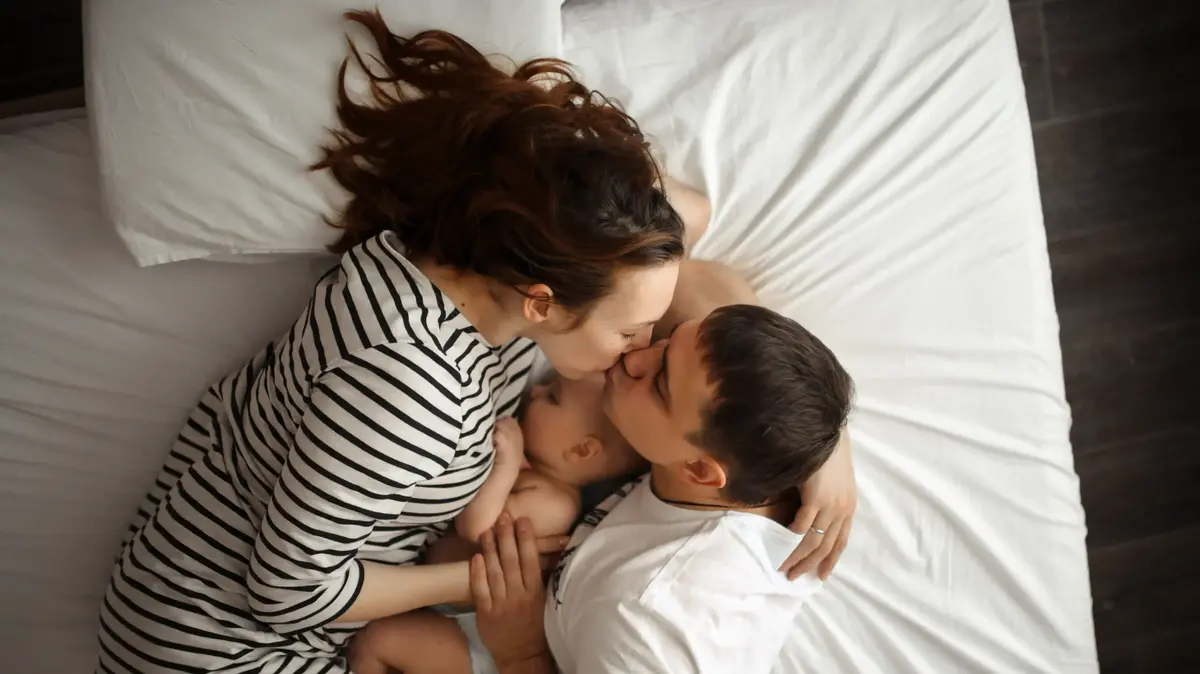- Click to share on Facebook (Opens in a new window)
- Click to share on Twitter (Opens in a new window)
- Click to share on LinkedIn (Opens in a new window)
- Click to email a friend (Opens in a new window)
Do you have weapons in your house? So you have to protect children 1:42
(CNN) - As cities and social media flooded with anger at the death of another black man at the hands of police, concerned parents are faced with how to protect their children from seeing the worst of violence as they explain the ravages of racism.
And this could not have come at a worse time.
- READ: OPINION | How do I make sure I don't raise the next Amy Cooper?
By sheltering at home for months to avoid the deadly coronavirus, many parents are juggling work and child care, while they have also decreased the rules of screen time for their children.
Now the kids are even more likely to find the video of George Floyd, an unarmed and handcuffed black man in Minneapolis, gasping as a white police officer puts a knee to his neck.
Even if they haven't seen it, experts say parents should assume that their children are already aware of tragedies like these and their consequences.
"Children and teens are experiencing the collateral consequences of the reported murders of Breonna Taylor, Tony McDade and George Floyd, whether they directly own a smartphone or not," said California pediatrician Dr. Rhea Boyd, who teaches at the level document on the relationship between structural racism, inequity and health.
How to talk to children about coronavirus and prevention? 2:22"Whether it's from social media accounts, conversations with peers or caregivers, overheard dialogues or the anguish they see on the faces of their loved ones, children know what's going on," Boyd said. "And without the guidance and validation of their caregivers, they may be navigating their feelings on their own."
Take care of yourself first
How can a parent help their child through these troubling times?
Let the child's age and level of development guide you, experts said. But first, make sure you have the right frame of mind.
“A father's first step is to take care of himself, his mental health, and his emotional health. Put on your own oxygen mask first before helping your child, ”said Chicago pediatrician Dr. Nia Heard-Garris, who chairs the Committee on Minority Health, Equity and Inclusion of the American Academy of Pediatrics (AAP, for her acronym in English).
- READ: This is why day-to-day racial prejudice is so dangerous
"The indirect trauma through the screens is real, especially for underserved communities who may have experienced similar actions firsthand," said Dr. Jenny Radesky, a behavioral development pediatrician who teaches at the University of Michigan.
The stress of watching traumatic events on television and smartphones "remains in our bodies and minds," added Radesky. She suggests that parents find ways to channel that energy with positive actions, such as deep breathing and concentration exercises, before playing or talking to their children.
"This doesn't mean letting go of anger or anxiety, it just means getting better organized so you can think and act more clearly," he said.
Once parents are fully prepared to be a calm and rational voice, "then they can discuss what is important to pass on to their child so that they are not sharing information that may traumatize them or make them feel insecure," said Heard-Garris.
Babies and toddlers
Although children under the age of three will not understand what is happening on television, they will be able to perceive "fear, urgency or anger in people's voices and behaviors," Radesky explained.
- MIRA: How to face the children's fights during a running of the bulls? We asked the experts
At this age, stress appears as fussy or unregulated behavior. To prevent this from happening, parents should read, listen to, or watch the news when the baby is not physically there.
"Look at what you need to stay informed about your community, but then turn it off and do something that makes your family feel connected and whole," said Radesky. "You may have to refocus or regulate your thoughts and feelings before resuming activities with your children."
According to experts, now is the time to start teaching him about systematic racism and how to identify and refute it.
Racist stereotypes and prejudices begin at a surprisingly young age.
As early as six months, a baby's brain may notice differences based on race, and from 2 to 4 years it can internalize racial bias, noted Maryland pediatrician Dr. Jacqueline Dougé, co-author of the AAP statement. on the impact of racism on the health of children and adolescents.
For infants and toddlers, "learning" racism is very similar to learning a new language, Dougé and California pediatrician Dr. Ashaunta Anderson wrote in a separate comment. It can happen without parental input, only because of the racial stereotypes that prevail in society.
How to deal with racism and bullying? 6:10At age 12, many children begin to establish their beliefs. That gives parents "a decade to shape the learning process, so that it reduces racial bias and improves cultural understanding," they wrote.
While useful for all races, it is especially important for white children to see black and brown children in a positive light to combat systemic racism, experts said. Books featuring multiracial characters are a great way for parents to do this. And since it's never too early to read to a baby, it starts right away.
Common Sense Media, a nonprofit organization that ranks movies, TV shows, books, apps, and other media for parents and schools, made a list of 80 diverse, multicultural characters for preschoolers and slightly older kids. , some of which could easily be suitable for infants and toddlers.
"There is also a website called Brown Bookshelf," said Heard-Garris. “These are books that have dark and black protagonists, who sometimes deal with difficult problems. I think books are really essential, especially for younger children, "he added.
Preschool and elementary age
This is the age when children begin to ask why other people look different from them.
"If your child asks about someone's skin tone, you might say, 'Isn't it wonderful that we are all so different?' You can even hold your arm next to his to show the differences in your family's skin tones, ”according to Dougé and Anderson.
At this age, children will see and absorb disturbing images of protests and riots, "probably focusing on worrying about a burning minivan or a scary-looking person wearing a mask," said Radesky.
Parents should do everything possible to limit children's exposure at this age to the media, be it television, smartphones or tablets, experts warned.
“This can be accomplished by setting certain times for children to use their devices, watching content with your children, finding other activities such as going outdoors, playing games, cooking together, setting rules for children to use the devices in a common area where parents can be aware, "said Dougé.
"These times also provide opportunities for parents to model the behavior they want their children to follow by limiting their exposure to the media," added Dougé.
But, as Boyd said, the kids have likely already heard the adult conversations, or been exposed to what's going on through social media accounts and conversations with friends.
"Parents who have not yet done so must proactively involve their children in these distressing events," Boyd said. "Ask them what they know and what they have seen. Ask them how they feel. Validate their feelings and let them know what you are doing to keep them safe, either in your home or in your community. ”
Parents will also need to provide their children with a broader social context of racism to try to explain the anger of protesters who fill the streets of cities across the country, Radesky said.
In doing so, parents can help build empathy and teach how to take perspective, rather than focus on the child's specific fears.
“Instead of concentrating on the questions the child may have about specific things, you can ask him questions like 'How do you think those people felt? Do you know why they were angry? What do you do when you feel something is unfair? '”Radesky completed.
"Providing a controlled space to understand what is happening and the ways to process it will help children navigate the distressing emotions, helplessness and fear that they may be experiencing," Boyd said.
Experts also said that age-appropriate books that address discrimination and explain feelings from different perspectives are extremely helpful during this time.
"You can also show them videos of past peaceful protests, where people were inspired to demand fair treatment," said Radesky, noting that some YouTube videos may contain intense and disinformation political ads that occur before and during the videos. .
"Just skip them and start showing your Martin Luther King Jr. video or other video once the ad has passed," Radesky suggested. "For older children, you can ask them what they think of the different ads and whether they are trustworthy," he said.
'The conversation'
For black families, there is another, more painful need at this age, known as "the conversation." It's a series of "things you can't do" that black families have gone through generations: don't resist the police. Stay away from bad places. Be respectful to whites and stay away from confrontation with white men, especially the police.
"We are black, so we have no choice but to talk about race and talk about racism," said Heard-Garris, who has a seven-year-old son. "Then he can probably talk to you more eloquently about racism than me and he's seven years old."
She painfully recalls when he asked if he would be the target of police violence at the tender age of four after hearing adults talk about a recent police shooting at an unarmed black man.
“He said, 'Are the police here to help me or will they shoot me? I thought they were supposed to keep me safe. I thought they were supposed to keep us safe. ' And he was four years old, ”he related.
"So we had a long conversation about how the police are supposed to keep us safe, and I assured him that, like his mother, that's my job. 'My first job is always to keep you safe,' I said.
"As I get older, I will have to have a more frank conversation than, 'Unfortunately, you will do all the right things, but you may not be sure." And that will be a difficult day for us. ”
The recent deaths of Breonna Taylor, an emergency medical technician who was killed in March after officers forced her entry into her home; Ahmaud Arbery, the 25-year-old unarmed black man who was shot while jogging in rural Georgia in February; And now, the death of George Floyd has many black parents fearful that "the conversation" is not enough.
"The problem here is systemic racism and contempt for black lives," said Heard-Garris. “And as a doctor, I don't just treat a patient who has a fever when they have a bacterial infection, do I?
"I give them antibiotics. Not only do I keep giving them Tylenol because that will not treat the infection. And I think that as a country we have to treat the disease, which is systemic racism. ”
As the Heard-Garris story illustrates, when to start "the conversation" will be unique to each child and family, Boyd said.
"For some, it may be sooner than expected, because evidence indicates that black children in particular are often perceived as older and less innocent than they are. For black girls, this adultization process can begin as early as age 5 and for black boys as early as age 10, ”Boyd said.
"Starting 'the conversation' with school-age children can prepare them for these encounters before they occur and equip them with life-saving tools," added Boyd.
As an American black pediatrician, Boyd often discusses the issue with parents of dependent children. She advises black parents to think of "conversation" as more of a process than a single conversation.
“That process can begin with presenting stories through age-appropriate books or movies that can generate questions that answer together. Or it can be a continuous dialogue that is triggered by current events. Just remember to include a specific guide that lets your child know their rights and the steps they can take to try to stay safe. And always be sure to tell your child that it's not fair that they have to learn these young lessons. But you're teaching to try to keep them safe, Boyd said.
White parents can also have "the conversation," Boyd said.
"It is an important time to empathize with your son," he said. "It is also important to highlight to other children that they may have fears or concerns related to their safety, and to model and practice 'standing' or acting in defense of those around them."
Preteens and teens
Of course, tweens and teens will likely see all the coverage of police brutality and protests on their personal smartphones. Most teens are comfortable communicating with their friends on social media, Heard-Garris said. Some teens have even started participating in online activism.
"Online activism is a coping response for some teens, especially now that we are physically distant," said Heard-Garris. "Repositioning, retweeting, expressing how they feel, talking to friends has been useful, a kind of active response to face it."
“Other teens, especially those who don't belong to a minority, so whites are educated on why this is happening, what is the history of our country, what is happening right now. Intellectualizing the problems has been helpful for them to understand that this is not just a problem today, this has been going on for years, '”Heard-Garris said.
At this age, children will be able to think more abstractly about racism, injustice, and violent versus peaceful protests and discuss their views with parents, experts say.
"Parents can ask their preteens or teens if they have seen anything online about the riots and protests, what they think, and what was upsetting or inspiring," said Radesky.
As the parent of any teenager will attest, direct questioning of teens often does not produce constructive responses.
"I don't know," is a typical reaction, so Radesky suggests that parents also try to ask about the kinds of injustice children see or feel in their daily lives.
Parents can also make good use of movies and documentaries that can educate older teens about the history of discrimination. Common Sense Media has lists of movies that discuss racism or inspire children to "change the world" that can be used to start conversations about racism and how they can help combat it, Radesky said.
"You don't need to preach to children about what's 'right' or 'wrong,'" he said. "It is better to have a conversation where they come to their own understanding and can see things in a broader social context."
Kira Banks, a clinical psychologist whose Raising Equity website offers free videos and resources on how parents can fight racism and cultivate an open mind in themselves and their children, suggests that parents watch movies like "13th" at a glance. powerful institutional racism in the justice system that premiered in 2016 with a standing ovation at the New York Film Festival.
"Is this a teaching moment? Absolutely. It must be, it has to be, ”Banks said. "And if a person has not done the work to understand the history of racism and discrimination in the United States, they should do it, and then join us in raising our children to see and disturb racism, and be the change we want see".
The work must be done by all social classes and races, experts say, including the most privileged.
"White and non-black families should not protect their older children from these images," said Radesky. “We need to engage our children in a conversation about racism and use these events as a catalyst.
"While it is annoying to see it, we need to sit with that discomfort and teach our families how to channel that energy to work to dismantle the racist structures that exist in our communities."
ParentsProtests


/cloudfront-eu-central-1.images.arcpublishing.com/prisa/5PVLVJ2V4VUBLK5BDKWBRZFS3E.jpg)












